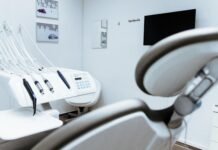
Last Updated on March 12, 2024 by admin
The World Health Organization (WHO) eventually declared the outbreak contained on July 5, 2003 — but not before it caused more than 8,000 infections and 774 deaths worldwide. Antigen tests are one of two types of tests to detect COVID-19, the other being PCR (polymerase chain reaction) tests, which look for the genetic material (RNA) of the virus. Antigen tests have several pros and cons compared with PCR tests.
But experts say people should look for antigen test an antigen test — also known as a rapid test — is better at detecting cases, because it looks for pieces of the virus itself instead of genetic material.
“Anything that’s going to be easier, quicker, faster and less expensive to do, especially if it’s more accurate, is going to be a plus,” said Dr. Robert Jacobson, an infectious disease specialist with Mayo Clinic. “I think we’d all like to see those.”
PCR tests are still the standard in the U.S., and doctors say they’re more reliable than rapid tests because they’re more sensitive and don’t have as many false positives or false negatives. Still, PCR tests can take several days to return results and generally require them to be processed in a lab.
Given the increasing number of SARS cases in Asia today, many people have concerns about this mysterious virus and how it could affect them. To help you stay informed about SARS, we’ve compiled below a list of the top five facts you should know about the disease.
No vaccine exists for SARS
There is no vaccine available for SARS. Instead, treatment involves relieving symptoms while the body fights off the virus. A patient may be given a ventilator if he or she has trouble breathing, oxygen therapy to increase blood oxygen levels and fluids through an IV if he or she is dehydrated. There are also experimental drugs being developed to treat SARS patients, such as remdesivir and convalescent plasma therapy.
Most patients develop fever, dry cough, shortness of breath and muscle pain. The disease progresses quickly to pneumonia and breathing difficulties. Other symptoms may include diarrhea, nausea, vomiting and general malaise. On average the incubation period is 2 to 7 days following exposure. Patients typically develop pneumonia which becomes more severe over a period of 3 to 10 days; in extreme cases this may lead to respiratory failure requiring mechanical ventilation. The case fatality ratio is approximately 3%; however, this varies considerably with age and overall health status of the patient.
Coronavirus Testing
The U.S. Department of Health and Human Services (HHS) is taking proactive steps to help communities prepare for the potential spread of the 2019 novel coronavirus in the United States. Nearly $1 million in funding will be made available immediately through its existing cooperative agreement with the Association of Public Health Laboratories (APHL). HHS anticipates awarding this funding by early next week so that APHL can assist in the development and expansion of testing capacity nationwide.
The funding is being provided through HHS’ Centers for Disease Control and Prevention (CDC) and National Institutes of Health (NIH), as well as the Biomedical Advanced Research and Development Authority (BARDA).
“HHS continues to work with our federal, state, local, tribal, territorial and international partners to respond to this global public health emergency,” said Secretary Azar. “This funding will enable us to quickly expand testing capabilities across our country, which remains the best way to keep Americans informed about this virus, protect people who may be at risk for infection, and slow the spread of disease.”





















